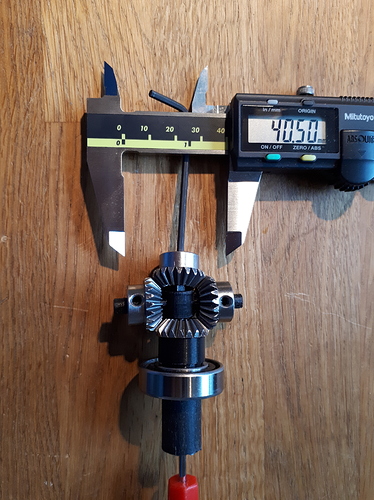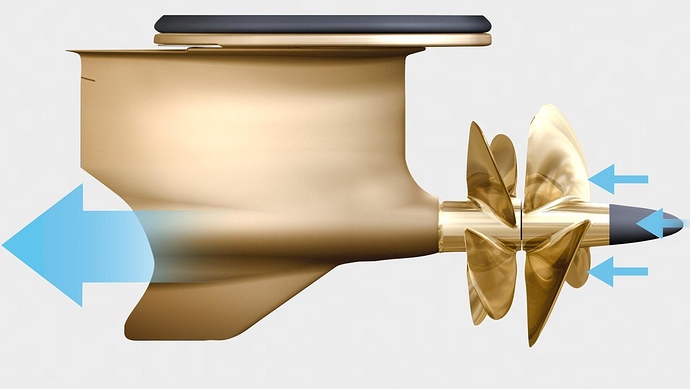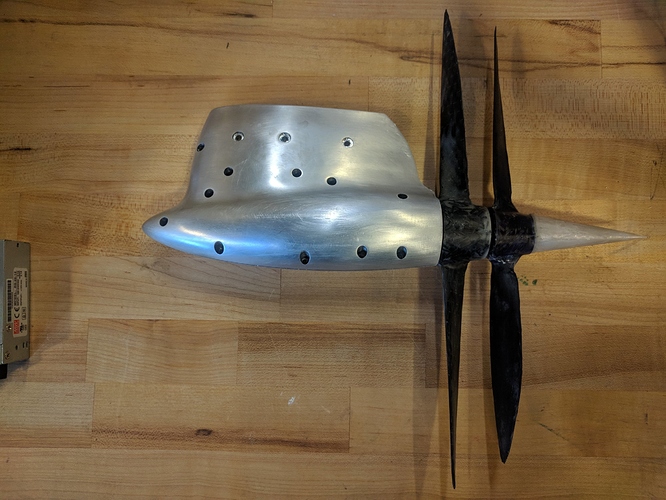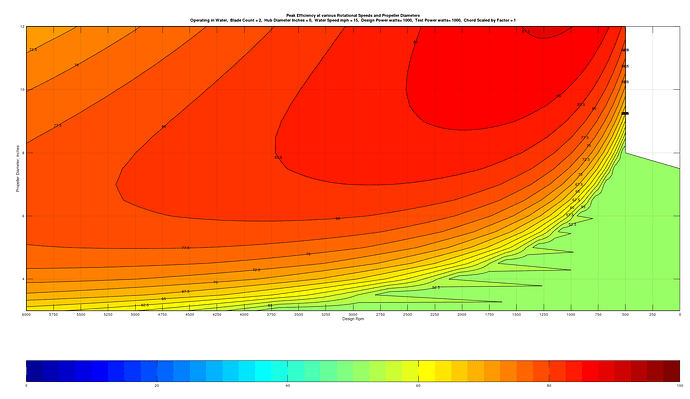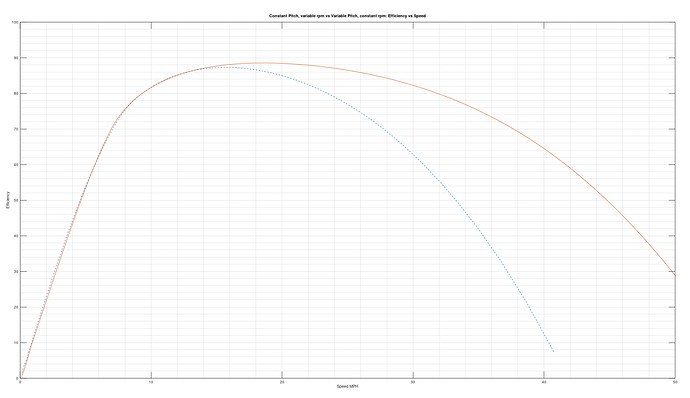Counter Rotating Propeller are only suitable for torpedo drive. They are not suitable for e-foil drive because such a drive has very low efficiency. To propel e-foil, one propeller is enough, but it must be well designed to have the highest efficiency.
@WNT thanks for the input , can you please explain your reason for claiming “low efficiency” ?
-
What do you consider the most efficient single efoil propeller setup in the public domain ? (I would like to use the best available as a bench mark )
-
What are you currently ruining ?
-
Do you think the guys at Volvo duoprop were telling lies ? Superyacht propulsion IPS, for every adventure | Volvo Penta
Many thanks,
Alex
@Hiorth All your videos are inspiring . I will share my progress as well.
I have been designing around the gears in this photo.
I need to have the gears hardness tested & machined or ground down to suit the CAD design. Also playing around with a custom roller pin design etc.
This all is a side project to my other design inspired by you guys & Pacificmeister
maybe someone can help with the propeller design ?
Thanks .
Alex
The first propeller (green) needs a laminar flow at the inlet. At the exit, however, it produces very strong turbulent flow (bubbles, cavitation, waves, etc.).
The second propeller (red) also needs a laminar flow at the inlet. However, as the laminar flow does not come to the second propeller, the efficiency of the second propeller is very low. This consequently causes low efficiency of both propellers together.
The hydrodynamic properties of the propellers (the input requires laminar flow, the output always generates turbulent flow) can not be changed, so it applies to Volvo Penta IPS, Rolls Royce and so on.
I wonder, does something like CR impeller exist? I heard about some radial water pumps using it but i am not sure how it works. Any axial double impeller setup throughout the history?
So, should we have a pull configuration instead of a push?
@WNT Thank you ! great explanation, perhaps the Volvo system advantage comes from forward facing propeller without any turbulent flow ?
again what do you consider the best available propeller pitch for a efoil ?
@Just please see link above the Volvo clain is:
Thousands of applications with the distinctive, forward-facing, twin counter-rotating propellers and individually steerable pods have been installed in hundreds of boat models worldwide. A few of the many benefits when comparing to inboard shafts are:
40% longer cruising range
20% higher top speed
30% reduced fuel consumption
30% less CO2 emissions
50% lower perceived noise
More onboard space
Cheers,
Alex
I did see. I am talking about impeller not propeller. I cant seem to see counter rotating jet drive on Volvo web. I did hear about double impeller radial water pump but i cant remember where or in what aplication. Could double impeller increase pressure ratio in comparison to a single impeller? Was there some working design in history or nowdays?
The most efficient drive for e-foil:
1st place - engine, propeller (highest achievable efficiency, highest acceleration, longest cruise)
2nd place - engine, impeller, nozzle - jet propulsion (top speed)
3rd place - engine, gearbox, propeller (highest stroke)
4th place - …
5th place - …
6th place - Counter Rotating Propeller (beautiful technical solution)
Such a propeller is not sold anywhere, no one has developed it!
@WNT Maybe I didn’t express myself very well, sorry!
I was not asking about commercial propellers I was more asking about the examples within our community of developers.
- Which propellers have you tested ?
- What are you currently using ?
- What advantages have you found with your personal design ?
- How long & how fast do you currently run?
Can you share a link to your testing data? I may of missed your results.
Many Thanks,
Alex
Please provide me with proof for your guesstimations as all commercial designs clearly show this to be incorrect…
I do not have e-foil, I only deal with the research and development of new propellers. Current commercial propellers are completely unsuitable for e-foil. They are very cheap but have a very low efficiency of 15-20%. Such low efficiency does not make it possible to use the power of a very expensive battery and engine to have e-foil a high stroke and a long voyage. E-foil is a very special watercraft that needs a specially optimized propeller. Such a propeller can not be bought anywhere, it has to be designed by a hydrodynamics expert.
That’s why I’m willing to design a propeller for e-foil, but it’s got to be the best fully functional prototype of direct drive. The best direct drive should include an outrunner motor, one axial bearing (instead of the original radial bearing), one watertight seal and a special aluminum case (can not be bought, must be produced on a lathe) in which the engine is fully inserted. This creates a compact rotating unit that does not reach the water through the seal, and it is enough to attach the propeller. The motor shaft serves to be attached to the front fixed section of the hydrofoil leg. I think this solution is the only one for e-foil - it does not reduce the motor torque, it will provide sufficient cooling and easy maintenance (gasket replacement). For this compact rotary unit it is very easy to design a highly efficient propeller.
Perhaps someone finds and my concept of direct drive is modeled in 3D CAD. It is very easy. But there must be a way to get three wires from the engine from a rotating rotating unit. There are two solutions, one is very cheap, but a bit laborious, the other is more sophisticated, but more expensive. I would have modeled this concept of direct drive, but I would prefer to just model the propeller. The prototype of such a direct drive concept is inexpensive, easy to manufacture. If an optimized propeller is connected to it, it will become the best propulsion for the hydrofoil in the world.
I do not think this is a good topic for further discussion.
@WNT Many thanks for your input. I look forward to seeing your direct drive propeller design, please keep us updated.
Cheers Mate.
It’s not directly e-foil related, but i designed and built a contra-rotating (not counter rotating ![]() propeller system for a solar powered boat race last year.
propeller system for a solar powered boat race last year.
http://www.taylorpeter.com/#/custom-propellers-design-and-fabrication/
It was my understanding from my research that the CRP isn’t easily modelled, and that no-one has thus far come up with an accurate way to predict performance. Presumably granular enough CFD may come close, but that’s very, very computationally expensive. I went for it because it was an interesting challenge, and i guessed at diameter differences, pitch difference, and spacing. While i’m glad i did it, i do think the benefit is outweighed easily by the added complexity. That extra bearings, bevel gear efficiency losses likely add up to more than the reclaim water spin energy reclaimed. It’s a tough nut to crack.
I also wrote a custom front-end for JavaProp, an free propeller design software that iterated through all the various single propeller diameters and speeds, and mapped the peak efficiency at a design speed. My design speed is slower than an e-foil should be designed for, but you’ll spot the trend, and i can re-run this in a few minutes with whatever design speed (water speed) you guys think is interesting. I’m also more limited in power, so my design power was much lower than you guys are willing/able to provide. That’s also an easy thing the change in my graphing script.
http://www.taylorpeter.com/#/solar-boat-2019/
Lastly, i wrote another JavaProp Script that compares Variable pitch, constant speed propellers to constant pitch, variable speed ones. This has a far, far greater efficiency gain than CRP, though with even greater complexity. It’s particularly relevant for hydrofoils, since they experience the drag bucket at low speeds, and they are constrained by propeller geometry at higher speeds. If the geometry can change, low speed takeoff is better, AND top speed is improved, all at increased efficiency. The mechanism is the hard part. There is lots of “prior art” to look at for inspiration though.
Interestingly, in my low speed application (solar boat race) the benefit of variable pitch doesn’t really show up.
ps, i just ran my parameter-space script for numbers i dreamt up for an efoil, lemme know if i should change these.
1000w, 15mph optimal/design speed, diameter range 3-12". Looks pretty interesting. These are unducted propellers.
Different than my application where ~250rpm is optimal (!!!)
Here is seems like 12" (or greater) and 1250rpm is optimal, though 3000rpm and 9" still gets you ~84% optimal efficiency. JavaProp can output an IGES solid model that you can they turn into a real propeller.
edit: each point is a different propeller geometry optimized for that specific diameter and rpm, along with the constant power, water speed etc. This is not a single propeller at different speeds and diameters(obviously?). Some of these might be more efficient at different speeds and whatnot, but are the best they can be for the design conditions.
and here is an efficiency of a good candidate from above.
12" designed for 1250rpm, consuming 1000w.
It shows no major difference at low speeds, but efficiency at higher speed is really dramatically higher than spinning the same prop at variable speeds to consume the same power, rather than tilting the blades to consume the same power. Not also that the motor has it’s own efficiency curve, so the variable speed paradigm is even less efficient than this graph depicts, since if off the motor’s sweet spot.
It’s interesting that the fixed pitch prop just has a short optimum. These simulated propellers are not combinable with our motors though, i think a more realistic output power is 1500W and upwards and then the 9” diameter is too high vs the efficiency range of the motors.
A prop with 4Nm loading at 4000rpm would be great and hit the efficiency spot of the motor better!
